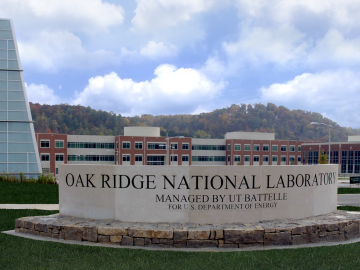Filter News
Area of Research
- (-) Neutron Science (5)
- Advanced Manufacturing (1)
- Biology and Environment (10)
- Building Technologies (2)
- Chemical and Engineering Materials (1)
- Clean Energy (23)
- Computational Biology (1)
- Fusion and Fission (1)
- Isotopes (2)
- Materials (14)
- Materials for Computing (1)
- Neutron Data Analysis and Visualization (2)
- Nuclear Science and Technology (2)
- Renewable Energy (1)
- Supercomputing (9)
News Topics
Media Contacts

Neutron scattering techniques were used as part of a study of a novel nanoreactor material that grows crystalline hydrogen clathrates, or HCs, capable of storing hydrogen.

Oak Ridge National Laboratory researchers are developing a first-of-its-kind artificial intelligence device for neutron scattering called Hyperspectral Computed Tomography, or HyperCT.

Textile engineering researchers from North Carolina State University used neutrons at Oak Ridge National Laboratory to identify a special wicking mechanism in a type of cotton yarn that allows the fibers to control the flow of liquid across certain strands.

Neutron measurements at Oak Ridge National Laboratory’s Spallation Neutron Source are giving physicists new insight into the behavior of quantum magnets. A research team led by Young-June Kim from the University of Toronto used neutron spectroscopy to observe a novel type of energ...

Crude oil refinement can be an extremely costly chemical process. In an effort to reduce energy and cost demands, Oak Ridge National Laboratory researchers Anibal Ramirez-Cuesta and Stuart Campbell are collaborating with University of Nottingham (UK) researchers to develop metal-orga...




